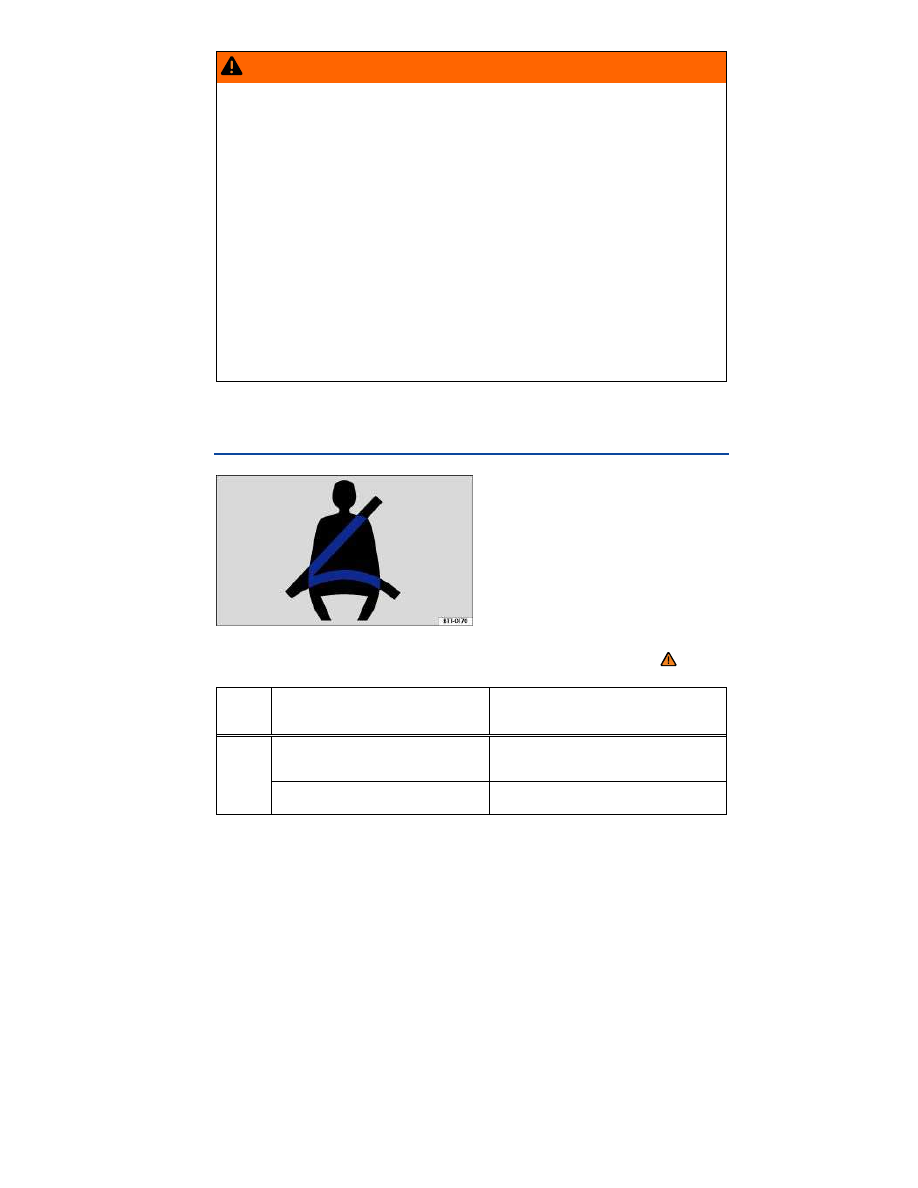Volkswagen Jetta SportWagen (2014 year). Manual - part 6

WARNING
Damage to safety belts reduces their overall effectiveness and increases the risk of serious
personal injury and death whenever the vehicle is being used.
Never let safety belts become damaged by being caught in the door or seat hardware.
Torn or frayed safety belts can tear, and damaged safety belt hardware can break in an
accident.
Inspect belts regularly for damage. If webbing, bindings, buckles, or retractors are
damaged, have the belts replaced immediately with the correct replacement belts approved
by Volkswagen for your vehicle, model, and model year.
Safety belts that were subject to stress in an accident and stretched must be replaced with
a correct, new safety belt, preferably by an authorized Volkswagen dealer or authorized
Volkswagen Service Facility.
Replacement after a crash may be necessary even if a safety belt shows no visible
damage. Anchorages that have been loaded must also be inspected.
Damaged safety belts must be replaced; they cannot be repaired.
Never try to repair a damaged safety belt yourself. Never remove or modify the safety belts
in any way.
Have safety belts, bindings, retractors and buckles replaced by an authorized Volkswagen
dealer or authorized Volkswagen Service Facility.
Always keep the belts clean. Dirty belts may not work correctly and can impair the
function of the inertia reel.
Applicable only in the United States
Warning light
Fig. 48 Warning light in the instrument cluster.
Please first read and note the introductory information and heed the WARNINGS
Lights
up or
flashes
Possible cause
Proper response
Driver and front passenger have not
fastened their safety belts, if front
passenger seat is occupied.
Fasten safety belts.
Heavy items on the front passenger seat.
Remove items from front passenger seat and
stow them safely.